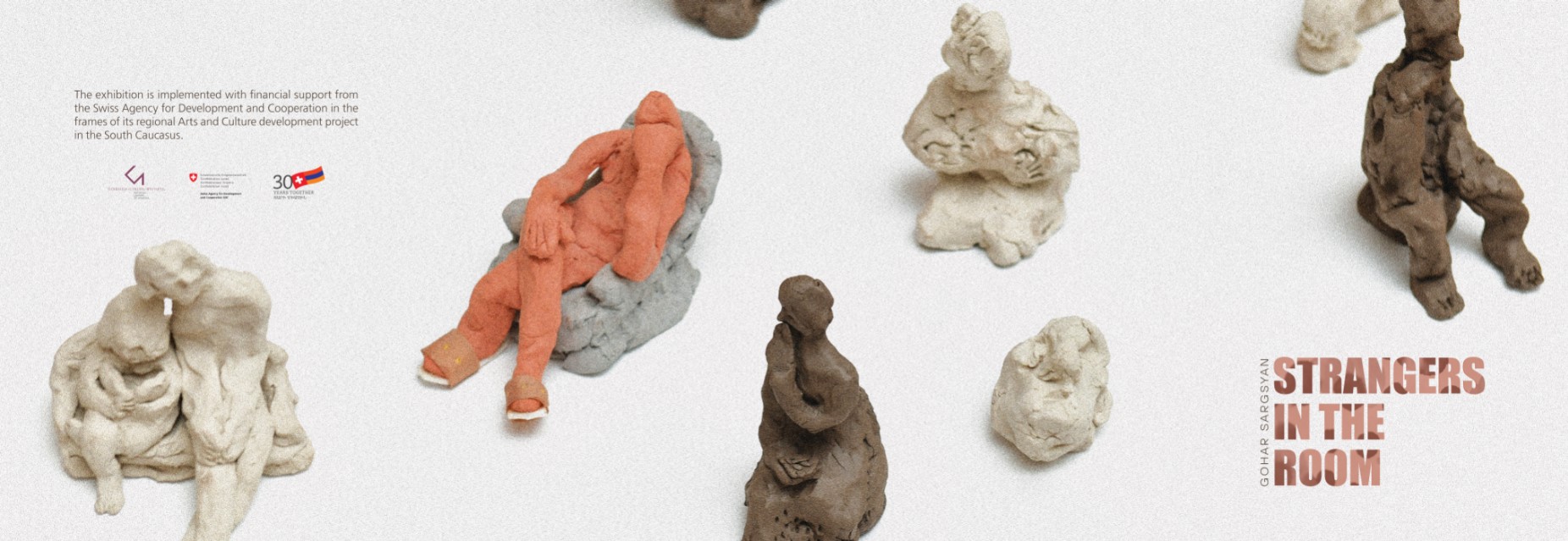Call us

"Strangers in the Room" a project by Gohar Sargsyan, highlights a time when the entire world was fighting the coronavirus disease and its consequences, a time when people were overwhelmed by an equally terrible epidemic: the psychological epidemic of loneliness and alienation. "Strangers in the Room" by Gohar Sargsyan addresses the ontological crisis caused by pandemics and wars. She emphasizes the emotions of people who have experienced the difficulties of pandemics and wars through various media: drawing, sculpture, and animation.
"I started painting this series to capture people's emotions, feelings, and experiences," the artist says. "The series is called "Strangers" because the main characters in this project are people I encountered in my daily life, on the streets, in cafes, shops, at events, and elsewhere. To create the main characters, I relied on my memory and on my own impressions".
Covid aggravated the previously unseen condition of loneliness, which appeared to be a psychological experiment. Suddenly, there was a schism between a person's personality and their inner world, resulting in an alienation from oneself.
People were locked up in their homes, their faces hidden behind a mask. We forgot our human faces, in lockdown, in our homes, and behind the mask we became strangers, alienated from one another. During the pandemic, Gohar Sargsyan recalled Michel Foucault's quote "...that man would be erased, like a face drawn in sand at the edge of the sea".
Perhaps you can communicate without a face, but the face plays a key role in human communication. The face is the first step to understanding another person.
In the "Strangers" series of sketches, Gohar Sargsyan attempts to understand the faces and human emotions hidden behind the mask. The artist recreates them through her imagination, imbuing her characters with personality, mood, and emotions and strives for heightened immediacy by using the sketch painting method. The paper itself appears to be newspaper strips, as if social reality was fragmented and people were separated from one another. People were alienated from one another not only by the mask, but also by social distancing. The portraits of these strangers are gathered in one location and they do not need to be far apart.
By gathering the fragments in one place, they cease to be faceless and unfamiliar, and they mentally overcome the social distance defined by the pandemic. These sketches are about seeing each other and overcoming feelings of alienation and unfamiliarity through the image of a face.
Along with social isolation and mask-wearing, lockdown was a difficult psychological test, which is the subject of Gohar Sargsyan's sculptural series with the same title. If the first series of sketches express the beauty of a face hidden behind a mask, the artist sees the second series as a test of the body. The result of home and family and also the so-called rest imposed by lockdown, which was actually immobility.
Gohar Sargsyan also uses animation to emphasize the expression of her paintings. The animation "Everyday Strangers" is inspired by the sketches, but in this case, the faces change quickly to represent different temperaments and moods. An artist can gain a better understanding of human temperament and psychology through animation. The animated works each convey their own message; these are the existential questions that the artist suspects people think about during pandemics and wars.
The installation environment becomes heavier due to an added sound component. Gohar Sargsyan's sound installation is a separate research & documentary project, wherein we hear people's stories about their experiences during Covid and with war, engaging the audience directly.
In the multimedia video and painting work "Man Connected to the System," the artist expresses her broad perspective on human existence. The human body seems to be a part within several systems, including the physiological, the social, as well as the political, and among which its vital energy flows.
Gohar Sargsyan places great importance on the areas that fulfill the purpose of her project. It was intended to be a project exhibited in a public space where its characters, "the strangers," and the audience could meet. And in order to truly become "A Stranger in the Room," the area had to be able to accommodate each of the installation's components.
The objective was for both the area and the exhibition to enable a dialogue and draw the audience into its realm. To gather everything that was scattered, everything that alienated closeness, to reveal what was hidden behind the mask or resulted from being in closed quarters.
Gohar Sargsyan's project involves more than just the pandemic. It is not only the elements of nature that induce us to hide and alienate ourselves. Other oppressive political, social, and cultural forces also emerge.
Truth is openness, wrote Martin Heidegger, and art illuminates human existence which would otherwise be buried in darkness. And indeed, that is the focus of this project.
